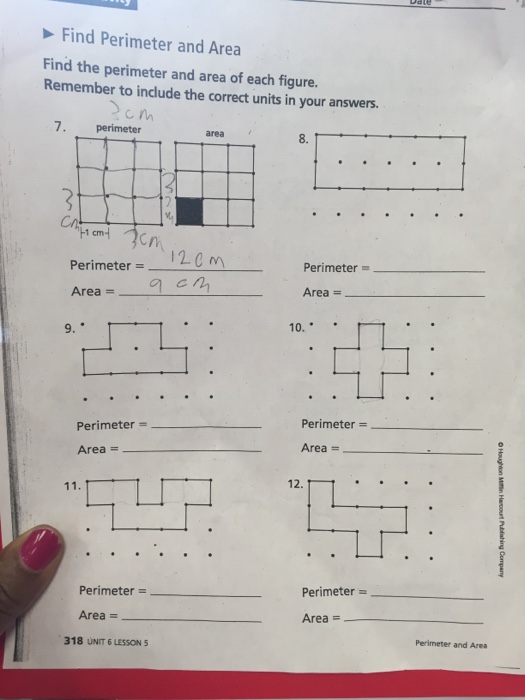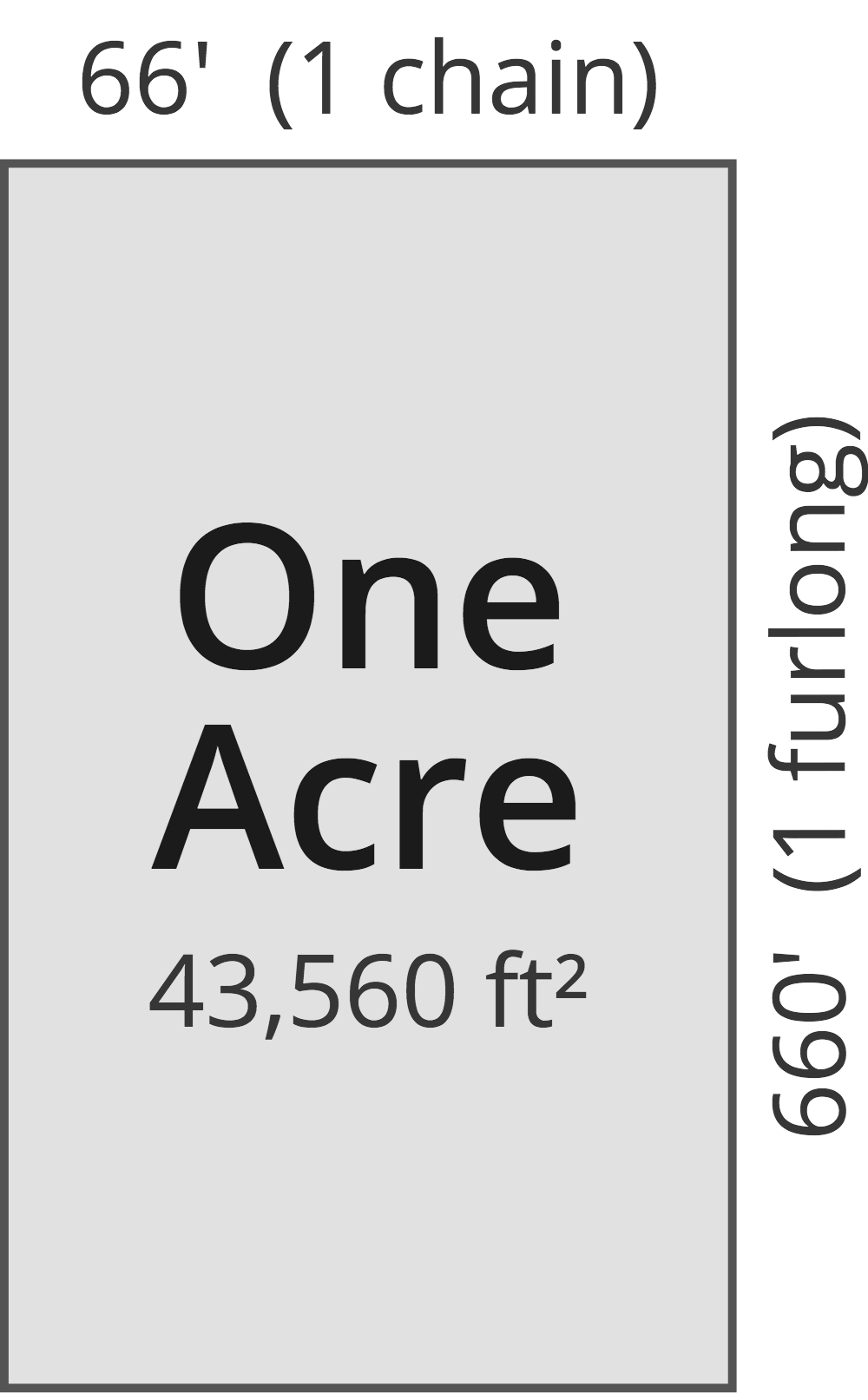Topic area and perimeter formulas for all shapes pdf: Discover the ultimate guide to area and perimeter formulas for all shapes in this comprehensive PDF. Perfect for students, teachers, and math enthusiasts, this resource covers everything from basic to advanced shapes, including practical examples and applications. Enhance your understanding and solve geometric problems with ease using our expertly crafted guide.
Table of Content
Area and Perimeter Formulas for All Shapes
This document provides a comprehensive list of area and perimeter formulas for various geometric shapes.
Rectangle
- Area: \( A = l \times w \)
- Perimeter: \( P = 2(l + w) \)
Square
- Area: \( A = s^2 \)
- Perimeter: \( P = 4s \)
Triangle
- Area: \( A = \frac{1}{2} b \times h \)
- Perimeter: \( P = a + b + c \)
Parallelogram
- Area: \( A = b \times h \)
- Perimeter: \( P = 2(a + b) \)
Trapezoid
- Area: \( A = \frac{1}{2} (b_1 + b_2) \times h \)
- Perimeter: \( P = a + b_1 + b_2 + c \)
Circle
- Area: \( A = \pi r^2 \)
- Perimeter (Circumference): \( P = 2\pi r \)
Ellipse
- Area: \( A = \pi a b \)
- Perimeter: \( P \approx \pi \left[ 3(a + b) - \sqrt{(3a + b)(a + 3b)} \right] \)
Regular Polygon
- Area: \( A = \frac{1}{4} n s^2 \cot \left( \frac{\pi}{n} \right) \)
- Perimeter: \( P = n s \)
Sector of a Circle
- Area: \( A = \frac{1}{2} r^2 \theta \) (in radians)
- Perimeter: \( P = r(\theta + 2) \) (in radians)
Annulus
- Area: \( A = \pi (R^2 - r^2) \)
- Perimeter: \( P = 2\pi (R + r) \)
Common 3D Shapes (Surface Area and Volume)
Cube
- Surface Area: \( SA = 6s^2 \)
- Volume: \( V = s^3 \)
Rectangular Prism
- Surface Area: \( SA = 2lw + 2lh + 2wh \)
- Volume: \( V = lwh \)
Sphere
- Surface Area: \( SA = 4\pi r^2 \)
- Volume: \( V = \frac{4}{3} \pi r^3 \)
Cylinder
- Surface Area: \( SA = 2\pi r (r + h) \)
- Volume: \( V = \pi r^2 h \)
Cone
- Surface Area: \( SA = \pi r (r + \sqrt{h^2 + r^2}) \)
- Volume: \( V = \frac{1}{3} \pi r^2 h \)

READ MORE:
Introduction
Understanding the area and perimeter formulas for various shapes is fundamental in geometry. These formulas are essential tools for solving real-world problems and performing calculations in fields such as architecture, engineering, and design. This guide provides detailed explanations and step-by-step instructions for calculating the area and perimeter of common geometric shapes, from basic rectangles and circles to more complex polygons and ellipses.
In this guide, you will find:
- A comprehensive list of formulas for both area and perimeter.
- Detailed explanations of each formula, including their derivations.
- Practical examples to illustrate how these formulas are used in real-world scenarios.
- Visual aids and diagrams to enhance understanding.
- Tips and tricks for remembering and applying these formulas effectively.
Whether you are a student preparing for exams, a teacher looking for additional resources, or a professional needing a quick reference, this guide will provide the information you need. Let's dive into the world of geometry and explore the various shapes and their properties step by step.
Basic Shapes
In this section, we will cover the area and perimeter formulas for basic geometric shapes. These shapes form the foundation of many more complex structures and are essential for understanding geometry.
Rectangle
- Area: The area of a rectangle is calculated by multiplying its length (\(l\)) by its width (\(w\)).
\[ A = l \times w \]
- Perimeter: The perimeter of a rectangle is the sum of twice the length and twice the width.
\[ P = 2(l + w) \]
Square
- Area: The area of a square is found by squaring the length of one of its sides (\(s\)).
\[ A = s^2 \]
- Perimeter: The perimeter of a square is four times the length of one of its sides.
\[ P = 4s \]
Triangle
- Area: The area of a triangle is calculated by multiplying the base (\(b\)) by the height (\(h\)) and then dividing by two.
\[ A = \frac{1}{2} b \times h \]
- Perimeter: The perimeter of a triangle is the sum of the lengths of its three sides (\(a\), \(b\), and \(c\)).
\[ P = a + b + c \]
Parallelogram
- Area: The area of a parallelogram is calculated by multiplying the base (\(b\)) by the height (\(h\)).
\[ A = b \times h \]
- Perimeter: The perimeter of a parallelogram is the sum of twice the base and twice the side length (\(a\)).
\[ P = 2(a + b) \]
Trapezoid
- Area: The area of a trapezoid is found by averaging the lengths of the two bases (\(b_1\) and \(b_2\)) and multiplying by the height (\(h\)).
\[ A = \frac{1}{2} (b_1 + b_2) \times h \]
- Perimeter: The perimeter of a trapezoid is the sum of the lengths of all its sides (\(a\), \(b_1\), \(b_2\), and \(c\)).
\[ P = a + b_1 + b_2 + c \]
Circle
- Area: The area of a circle is calculated by squaring the radius (\(r\)) and multiplying by pi (\(\pi\)).
\[ A = \pi r^2 \]
- Perimeter (Circumference): The perimeter or circumference of a circle is found by multiplying the diameter (\(d\)) or twice the radius (\(2r\)) by pi (\(\pi\)).
\[ P = 2\pi r \]
Advanced Shapes
In this section, we will explore the area and perimeter formulas for more advanced geometric shapes. These shapes include ellipses, regular polygons, sectors of circles, and annuli, each with unique properties and calculations.
Ellipse
- Area: The area of an ellipse is calculated by multiplying pi (\(\pi\)), the semi-major axis (\(a\)), and the semi-minor axis (\(b\)).
\[ A = \pi a b \]
- Perimeter: The perimeter of an ellipse does not have a simple exact formula, but an approximation is given by Ramanujan's formula:
\[ P \approx \pi \left[ 3(a + b) - \sqrt{(3a + b)(a + 3b)} \right] \]
Regular Polygon
- Area: The area of a regular polygon (a polygon with all sides and angles equal) with \(n\) sides, each of length \(s\), is given by:
\[ A = \frac{1}{4} n s^2 \cot \left( \frac{\pi}{n} \right) \]
- Perimeter: The perimeter of a regular polygon is simply the product of the number of sides and the length of one side.
\[ P = n s \]
Sector of a Circle
- Area: The area of a sector of a circle, with radius \(r\) and angle \(\theta\) (in radians), is:
\[ A = \frac{1}{2} r^2 \theta \]
- Perimeter: The perimeter of a sector includes the two radii and the arc length, which is:
\[ P = r(\theta + 2) \] (in radians)
Annulus
- Area: The area of an annulus (the region between two concentric circles with radii \(R\) and \(r\)) is calculated by subtracting the area of the smaller circle from the area of the larger circle.
\[ A = \pi (R^2 - r^2) \]
- Perimeter: The perimeter of an annulus is the sum of the circumferences of the inner and outer circles.
\[ P = 2\pi (R + r) \]
Three-Dimensional Shapes
This section covers the surface area and volume formulas for common three-dimensional shapes. These shapes include cubes, rectangular prisms, spheres, cylinders, and cones. Understanding these formulas is crucial for solving problems related to three-dimensional objects.
Cube
- Surface Area: The surface area of a cube with side length \(s\) is the sum of the areas of its six faces.
\[ SA = 6s^2 \]
- Volume: The volume of a cube is the cube of its side length.
\[ V = s^3 \]
Rectangular Prism
- Surface Area: The surface area of a rectangular prism with length \(l\), width \(w\), and height \(h\) is the sum of the areas of all its faces.
\[ SA = 2lw + 2lh + 2wh \]
- Volume: The volume of a rectangular prism is the product of its length, width, and height.
\[ V = lwh \]
Sphere
- Surface Area: The surface area of a sphere with radius \(r\) is given by:
\[ SA = 4\pi r^2 \]
- Volume: The volume of a sphere is given by:
\[ V = \frac{4}{3} \pi r^3 \]
Cylinder
- Surface Area: The surface area of a cylinder with radius \(r\) and height \(h\) includes the areas of its two circular bases and the rectangular wrap.
\[ SA = 2\pi r (r + h) \]
- Volume: The volume of a cylinder is the product of the area of its base and its height.
\[ V = \pi r^2 h \]
Cone
- Surface Area: The surface area of a cone with radius \(r\) and height \(h\) includes the area of its circular base and the lateral surface area, calculated as:
\[ SA = \pi r (r + \sqrt{h^2 + r^2}) \]
- Volume: The volume of a cone is one-third the product of the area of its base and its height.
\[ V = \frac{1}{3} \pi r^2 h \]

Formulas and Examples
In this section, we will present various formulas for calculating the area and perimeter of different shapes, along with examples to illustrate their application. These formulas are fundamental tools in geometry, useful for solving a wide range of mathematical problems.
Rectangle
- Area Formula: \( A = l \times w \)
- Perimeter Formula: \( P = 2(l + w) \)
Example: If a rectangle has a length of 8 units and a width of 5 units:
- Area: \( A = 8 \times 5 = 40 \, \text{square units} \)
- Perimeter: \( P = 2(8 + 5) = 26 \, \text{units} \)
Square
- Area Formula: \( A = s^2 \)
- Perimeter Formula: \( P = 4s \)
Example: If a square has a side length of 4 units:
- Area: \( A = 4^2 = 16 \, \text{square units} \)
- Perimeter: \( P = 4 \times 4 = 16 \, \text{units} \)
Triangle
- Area Formula: \( A = \frac{1}{2} b \times h \)
- Perimeter Formula: \( P = a + b + c \)
Example: If a triangle has a base of 6 units, a height of 3 units, and sides of 6, 5, and 4 units:
- Area: \( A = \frac{1}{2} \times 6 \times 3 = 9 \, \text{square units} \)
- Perimeter: \( P = 6 + 5 + 4 = 15 \, \text{units} \)
Circle
- Area Formula: \( A = \pi r^2 \)
- Perimeter (Circumference) Formula: \( P = 2\pi r \)
Example: If a circle has a radius of 3 units:
- Area: \( A = \pi \times 3^2 = 9\pi \, \text{square units} \)
- Perimeter: \( P = 2\pi \times 3 = 6\pi \, \text{units} \)
Trapezoid
- Area Formula: \( A = \frac{1}{2} (b_1 + b_2) \times h \)
- Perimeter Formula: \( P = a + b_1 + b_2 + c \)
Example: If a trapezoid has bases of 8 units and 6 units, height of 4 units, and sides of 5 and 7 units:
- Area: \( A = \frac{1}{2} (8 + 6) \times 4 = 28 \, \text{square units} \)
- Perimeter: \( P = 5 + 8 + 6 + 7 = 26 \, \text{units} \)
Sphere
- Surface Area Formula: \( SA = 4\pi r^2 \)
- Volume Formula: \( V = \frac{4}{3} \pi r^3 \)
Example: If a sphere has a radius of 2 units:
- Surface Area: \( SA = 4\pi \times 2^2 = 16\pi \, \text{square units} \)
- Volume: \( V = \frac{4}{3} \pi \times 2^3 = \frac{32}{3} \pi \, \text{cubic units} \)
Applications
Understanding the area and perimeter formulas for various shapes is crucial for solving real-world problems. These formulas are widely used in numerous fields, including architecture, engineering, landscaping, and everyday situations. Below are some practical applications where these formulas play a significant role:
Architecture and Construction
Architects and builders use area and perimeter formulas to design and construct buildings. They need to calculate the surface area for materials such as paint, flooring, and roofing, and determine the perimeter for fencing and borders.
- Example: Calculating the total area of walls to estimate the amount of paint required.
- Example: Determining the perimeter of a plot to design a fence around it.
Engineering
Engineers use these formulas in various projects, such as designing mechanical parts, electrical circuits, and civil infrastructure. Precise calculations are essential to ensure safety, efficiency, and functionality.
- Example: Calculating the surface area of a cylindrical tank to determine the amount of material needed for construction.
- Example: Determining the volume of concrete required for a cylindrical pillar.
Landscaping and Gardening
Landscapers and gardeners apply area and perimeter formulas to plan and design gardens, parks, and outdoor spaces. They use these calculations to allocate space for plants, pathways, and decorative elements.
- Example: Calculating the area of a garden bed to determine the number of plants that can be planted.
- Example: Determining the perimeter of a lawn to lay out an irrigation system.
Everyday Life
Area and perimeter formulas are also useful in everyday activities, such as home improvement projects, crafting, and shopping.
- Example: Calculating the area of a room to buy the correct amount of carpet or tiles.
- Example: Determining the perimeter of a picture frame for cutting matting or backing material.
Education
Teachers and students use these formulas to learn and understand fundamental mathematical concepts. They are a part of the curriculum in various educational levels, helping students develop problem-solving skills and logical thinking.
- Example: Solving geometry problems in textbooks and exams.
- Example: Conducting experiments and projects that involve measuring and calculating areas and perimeters.
In summary, the knowledge of area and perimeter formulas is essential across various domains. Mastery of these formulas enhances one's ability to tackle practical problems effectively and efficiently.
Conclusion
Understanding the formulas for area and perimeter of various shapes is a fundamental aspect of geometry that has numerous practical applications in everyday life. Whether you are measuring land for construction, designing a garden, or solving complex mathematical problems, these formulas are essential tools.
In this comprehensive guide, we have covered a wide range of shapes, from basic two-dimensional figures like rectangles and circles to more advanced shapes such as ellipses and sectors, and even three-dimensional figures like cubes and cylinders. Here’s a summary of the key points:
- The area is the amount of space enclosed within a shape, measured in square units (e.g., cm2, m2).
- The perimeter is the total length of the boundary of a shape, measured in linear units (e.g., cm, m).
- Each shape has specific formulas to calculate its area and perimeter, which depend on its dimensions and properties.
For instance:
- The area of a rectangle is calculated as A = l × w, where l is the length and w is the width.
- The perimeter of a circle is calculated as P = 2πr, where r is the radius.
We have also discussed the formulas for the surface area and volume of three-dimensional shapes, which are crucial for understanding real-world objects. For example:
- The volume of a cylinder is given by V = πr2h, where r is the radius and h is the height.
- The surface area of a sphere is calculated as A = 4πr2.
Applying these formulas can simplify many practical tasks, such as determining the amount of paint needed to cover a surface, the length of fencing required for a garden, or the capacity of a container. By mastering these concepts, students and professionals alike can enhance their problem-solving skills and improve their understanding of the physical world.
We hope this guide has provided you with a clear and comprehensive understanding of area and perimeter formulas. Remember, practice is key to mastering these concepts. Utilize this knowledge in your everyday tasks and mathematical challenges to see its true value.
For further reading and more detailed examples, consider exploring additional resources and practice problems. Geometry is a vast field, and there's always more to learn!
Video về các công thức diện tích và chu vi trong hình học, bao gồm các hình cơ bản và nâng cao, giúp bạn hiểu rõ hơn về các công thức này.
Công Thức Diện Tích và Chu Vi - Công Thức Hình Học
READ MORE:
Video hướng dẫn về các công thức tính diện tích và chu vi trong đo lường, giúp bạn nắm vững kiến thức cơ bản một cách nhanh chóng và dễ hiểu.
Công Thức Diện Tích và Chu Vi | Công Thức Đo Lường | #toán #ngắn










